Are you planning to start commercial paddy farming? Then you must be aware of the best fertilizer for Rice crop. Rice is the most important crop in India (paddy). Rice cultivation is dominated by chemical fertilizers. The role of chemical fertilizers in Rice yields only 59% to 69%, but its use with organic nutrient sources can help produce Rice grains and store carbon in the soil. Now Let’s get into the details of the fertilizer requirement of the Rice crop/Paddy crop.
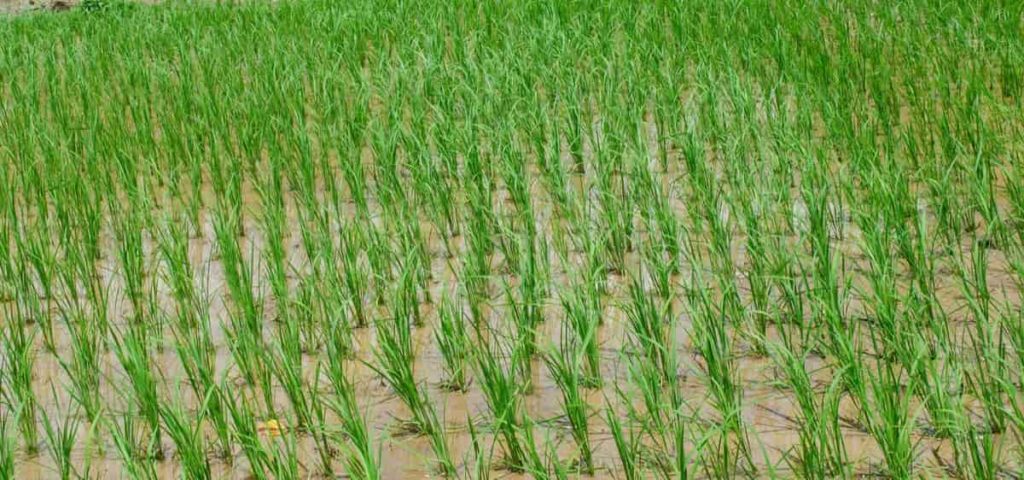
With the use of biofertilizer, Rice yield is 50% lower than N, and phosphorus (P) is 32% higher than that of chemical fertilizers. Nitrogen, phosphorus, and potassium make the Rice plant strong and healthy with many tails resulting in higher yields. Nutrient requirement depends on;
- Target yield and soil nutrient supply
- Fertilizer and recovery type
- Time (which depends on variety maturity)
This article is also helpful in;
- Recommended fertilizer dose for paddy
- Timing of fertilizer application in rice crop
- NPK dose for paddy
- Fertilizer schedule in paddy
What nutrients are required for Rice to grow properly?
First of all, before you use any method of fertilizing, you have to keep in mind the soil condition of your field through semi-annual or annual soil testing. No two fields are alike, nor can anyone advise you on fertilization methods regardless of your soil test data, tissue analysis, and crop history of your field. ۔ However, we will list the most common Rice fertilizer application schemes, which are used by a large number of farmers.
A common Rice fertilizer application scheme used by a large number of Rice farmers involves 2 major applications for fertilizer: the first application occurs approximately simultaneously with planting or transplanting (or approximately 20). Days later) and the second is about 45 to 60 days after the first request. Many farmers apply 0.5-tons of N-P-K 30-10-10 per hectare on the day of sowing/planting (or 20 days later).
In case you miss this: SRI Rice Cultivation – Method, Paddy Yield, Benefits
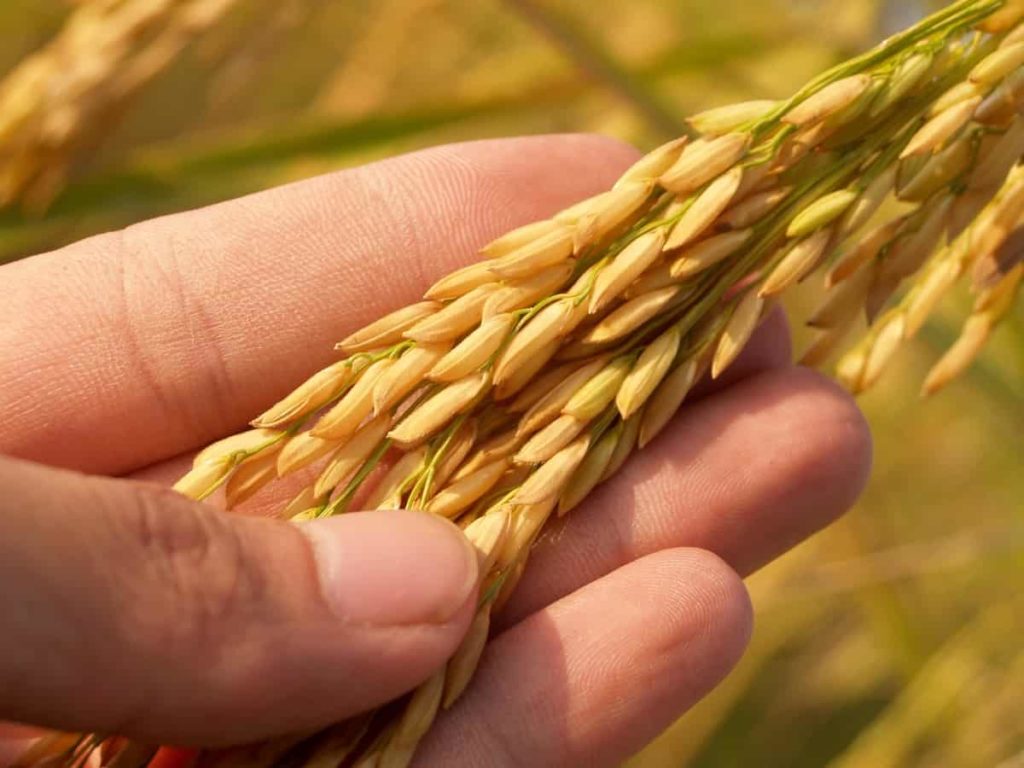
Approximately 45-60 days after the first application, they apply 0.2-0.3 tons of N-P-K 40-0-0 or 33-0-0 per hectare. Your Rice plants may or may not produce more after the use of fertilizers. In each field, you will get a special grain production no matter what fertilizer you add. The nutrients for this production are supplied from the soil. Fertilizer is essential if you want to increase yields.
Best fertilizer for Rice crop
NPK fertilizer
Nitrogen
Nitrogen is the most restrictive nutrient for NPK Rice production. Nitrogen is essential for plant height, leaf size, panicle number, and high yield per hectare. Rice requires a lot of nitrogen to make pancakes. The critical period in which many farmers apply N occurs two weeks after transplanting or 21 days after sowing. In addition, many farmers forward N applications before sowing and filling seeds in the field.
Nitrogen can be used in dry soil which we will irrigate immediately. Alternatively, integrate it and flood the field after 3 to 5 days. An initial application may also be in the form of ammonium. We can apply it on dry soil, just before flooding. We should keep in mind that once we apply the initial N, the field will flood within 5 days. Flooding usually incorporates N into the soil and protects it from damage. However, keep in mind that each field is different and has different needs.
Nitrogen, the most important nutrient for Rice, is limiting global Rice production capacity. Nitrogen stimulates plant growth by giving the leaves a healthy green color. Most Indica varieties appear to have a relatively low nitrogen level in the region of 25 kg N / ha.
In case you miss this: Organic Paddy Farming (Rice) – Production, Cultivation
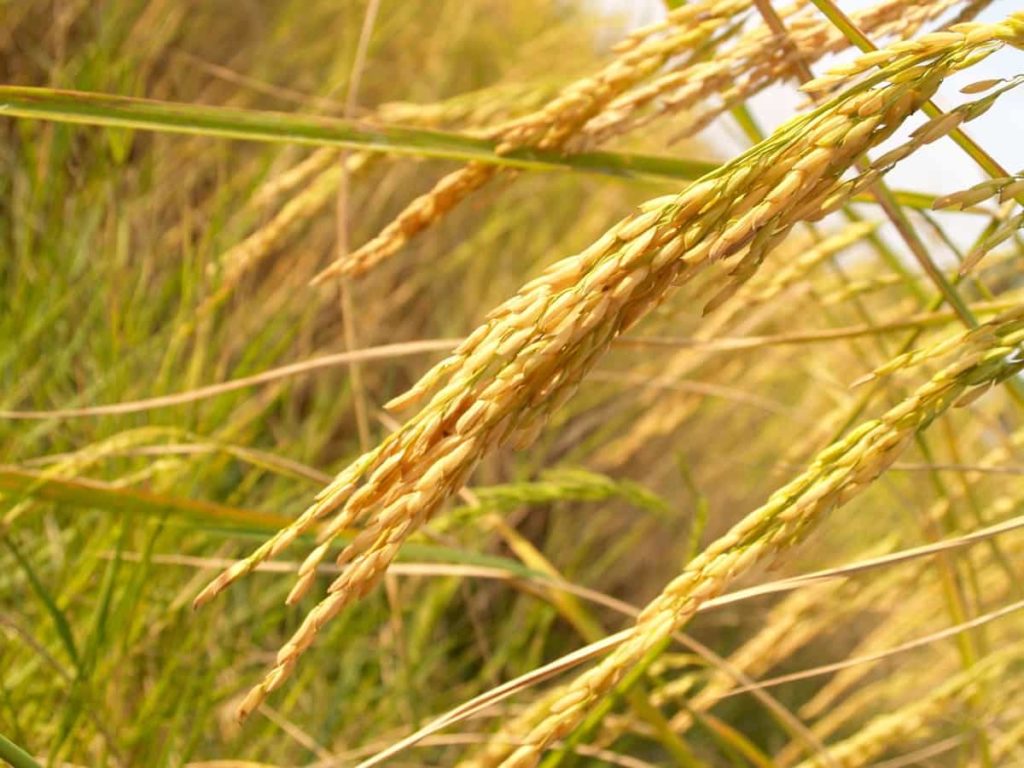
Phosphorus (P)
Phosphorus is very important in the early stages of the development of Rice plants. It helps in the strong root development. Soil pH plays an important role in the P availability. Many Rice growers claim that the ideal availability of phosphorus for Rice is when the soil pH is less than 6.5.
Potassium (K)
Potassium (K) is also essential for good Rice production. Potassium (K) aids in plant disease resistance, root growth, and thickness, leaf sustainability, leaf onset, and growth. Potassium deficiency has a major impact on crop growth.
Fertilizer schedule
Fertilizer Requirement (kg/acre)
| Urea | Di-ammonium Phosphate | Single Super Phosphate (SSP) | Muriate of potash |
| 110 | 27 | 75 | 20 |
| Nitrogen | Phosphorus | Potash |
| 50 | 12 | 12 |
In case you miss this: Black Rice Cultivation, Farming Practices In India
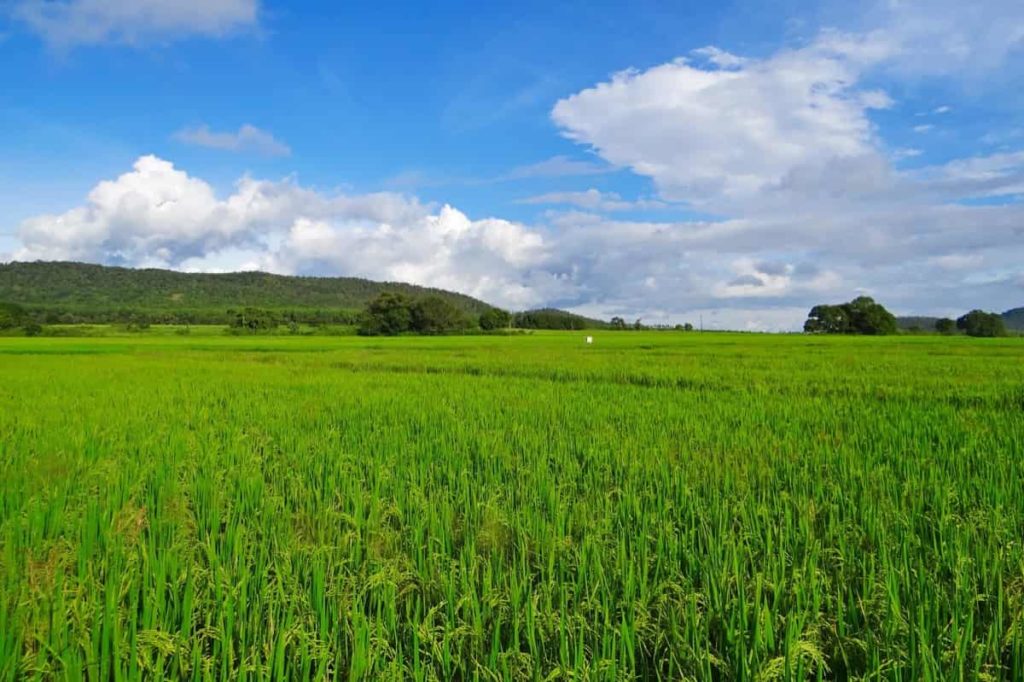
Use N: P: K @ 50: 12: 12 kg / acre n form of urea @ 110kg / acre, SSP @ 75kg / acre and MOP @ 20kg / acre for Rice. Test the soil before applying the fertilizer and apply fertilizer based on the results of the soil test. If a soil test shows a deficiency, apply P and K doses. If you want to use DAP, use Urea @ 100kg / acre, DAP @ 27kg / acre and MOP @ 20kg / acre. Apply 1/3 dose of nitrogen and a full dose of P and K before the last puddling.
Apply zinc sulfate heptahydrate @ 25 kg or zinc sulfate monohydrate @ 16 kg per acre to control zinc deficiency. Due to the lack of water, the young leaves turn yellow or yellowish-white about three weeks after transplanting. Also, irrigate immediately spray ferrous sulfate 1 kg / 100 liters of water per acre two to three times at weekly intervals.
Most suitable fertilizer for Rice
The most suitable fertilizer for Rice is one that meets the nutritional requirements of plants, especially nitrogen and sulfur. The most suitable fertilizer for Rice is ammonium sulfate. Farmers use ammonium sulfate primarily where they need extra N (nitrogen-based) and S (sulfur-based) to meet the nutritional needs of growing plants. After all, ammonium sulfate contains only 21% N.
Other sources of fertilizer are more concentrated and efficient, making it a better choice for N-deficient fields. Ammonium sulfate supports or drives many essential plant functions, including protein synthesis. Because N-fraction ammonium is present in the ammonium form of sulfate, Ricegrowers often apply it to flooded lands, as nitrate-based fertilizers are a poor choice due to denitrification losses.
In case you miss this: Rice Mill Subsidy, Loan, Permission, License, Schemes
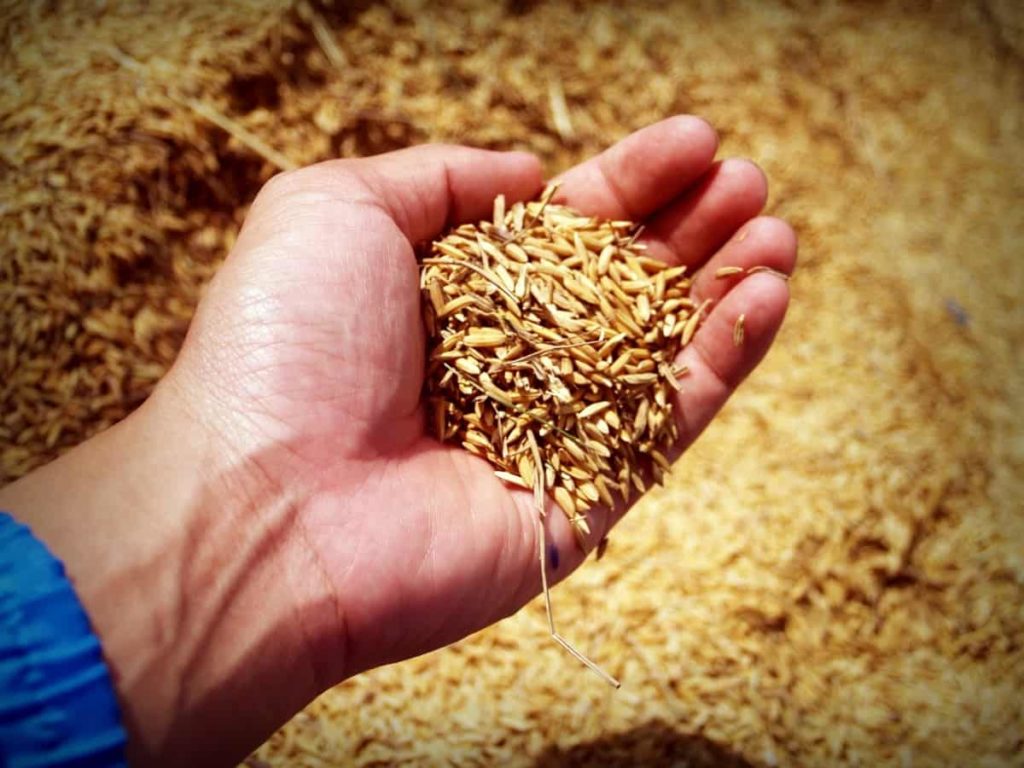
When to apply fertilizer
Always apply fertilizer in the land 3-4 cm below the seed so that the seed and the fertilizer do not mix, as this harms seed germination and crop yield. When applying fertilizer, mix half the amount of nitrogen before sowing and divide the remaining amount of nitrogen into two parts then mix in soil 20-25 and 50-55 days after sowing. Though, use phosphorus and potash.
Zinc is an important micronutrient in Rice fields. It causes cucumber disease. Apply 20-25 kg zinc sulfate before sowing to supplement zinc deficiency in dwarf Rice varieties. For basmati and hybrid varieties, apply 20-25 kg and 25-30 kg zinc sulfate before sowing.
Other nutrients
Calcium – Calcium combines with pectin to form calcium pectate, an essential component of the cell wall. It also promotes the activity of soil bacteria related to the determination of free nitrogen or the formation of nitrates from organic forms of nitrogen. In addition, it is essential for the development of a good root system.
Magnesium – This is usually required by the plants in relatively small quantities. Therefore, its deficiency in soil is felt later than in potassium.
Sulfur – These include chlorophyll production, protein synthesis, and plant function and structure. Sulfur forms an important component of straw and plant stalks.
Iron – Iron is essential for the synthesis of iron chlorophyll.
Zinc – Zinc is essential for the conversion of carbohydrates. Zinc acts as a metal activator of enzymes in plants. Zinc deficiency in lowland Rice occurs near neutral to alkaline soils, especially in calcareous soils.
Boron – Boron facilitates the translocation of sugar by creating a sugar borate complex. Also involved in fertilization, hormone metabolism, etc.
Copper – It is an important component of plastocyanin (copper-containing protein). It is also a component of many oxidizing enzymes. Important for reproductive development. The root helps in metabolism and helps protein utilization.
Manganese – Manganese is a nitrate reductase and activator of many respiratory enzymes. It is essential for the evolution of oxygen (photolysis) during photosynthesis. Works with enzyme systems involved in the breakdown of carbohydrates and nitrogen metabolism. Soil is a source of manganese.
Silicon – Silicon is an important element in improving plant health and disease resistance. It has the potential to significantly reduce the susceptibility of certain plants to both biological and abiotic diseases. It is beneficial for Rice cultivation.
Organic fertilizers
Organic fertilizers commonly used in Rice orchards, such as cow dung, green manure, and Rice husk, contain substances that increase the amount of carbon in the soil at different stages. The global carbon content of soil today is so high that it contains three times as much carbon as the atmosphere. Thus, even a small change in soil management techniques (such as adding organic matter) has the potential to significantly reduce human GHG emissions from Rice production.
The results of the scientists’ study examined the addition of organic and inorganic fertilizers (usually a combination of nitrogen, phosphorus, and potassium, commonly called NPK) to increase their global warming potential and methane emissions, soil carbon storage, and crop productivity. Rice seedlings are sown in five different plots. In the first plot, the traditional NPK has applied only a regular dose of fertilizer, and it acted as a control against which others were measured.
In case you miss this: Organic Basmati Rice Farming Practices for Beginners
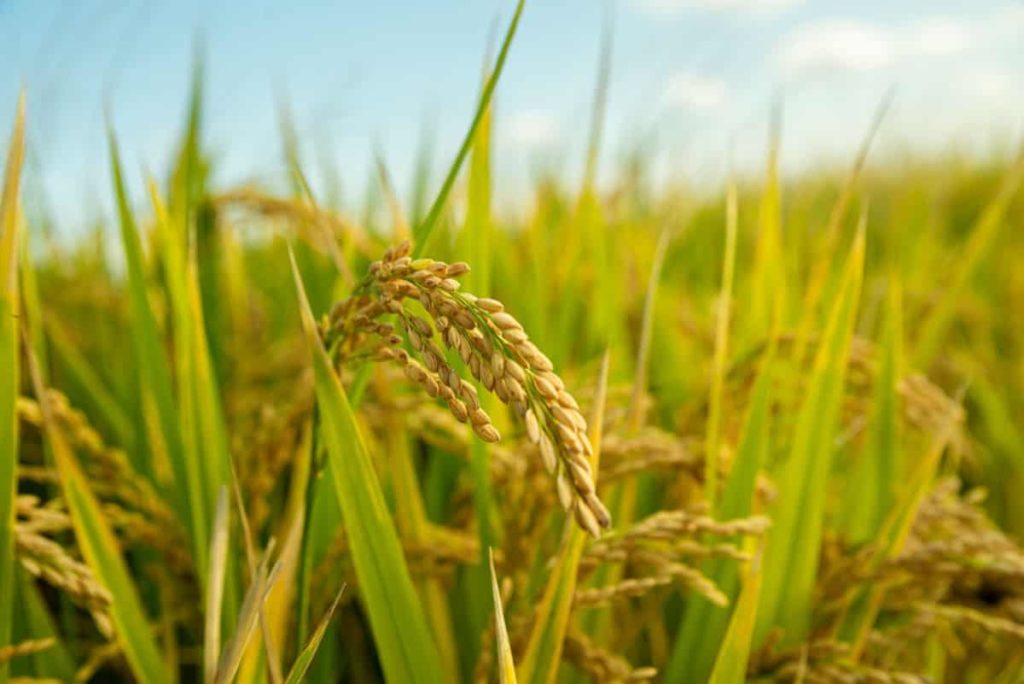
The other four plots used a variety of organic materials like cow dung, green manure from the herbaceous plant called Sesbania aculeata, compost from the aquatic fern called Azolla caroliniana, and Rice husk. These organic compounds were added in addition to inorganic NP fertilizers. The study observed that NPK and green manure plots increased methane emissions compared to control plots with only NPK.
Researchers also found that adding cow dung or green manure increased methane emissions by 40-60%. However, crop yields showed an upside pattern; This has increased significantly with the addition of organic fertilizers. Research has shown that Azolla compost plots had the highest increase in production (27%), followed by cow dung (23%), Rice husk (17%), and green manure (11%).
Application of organic fertilizer
- Apply 12.5-ton FYM or compost or green leaf manure @ 6.25 ton/ha.
- If green manure is sown at the rate of 50 kg seed per hectare, apply green manure to a depth of 15 cm by trampler or tractor.
- Green manure can be replaced by press-mud/ composted coir-pith.
Green manure/core cropping
A common green manure used in Rice production is Azolla or duckweed fern. Nitrogen fixed in Azolla becomes available for Rice when Azolla is decomposed.
Farmyard manure
Farmyard manure can be a mixture of animal dung, urine, straw, and litter which is used as bedding stock. The abundance of this manure depends on some factors like (a) the nutritional value of the food given to the animal; feeds rich in protein and minerals produce manure (b) quantity of straw used; an excessive amount of straw ensures slow digestion of manure. Farmyard fertilizer increases soil organic carbon levels.
Compost
Compost is made from decomposed organic matter. Organic matter can be anything from crop residues to animal droppings or dung. Rice residue is used in the production of organic Rice. This compost consists of Rice straw and husk (through milling products), legume crop residues, and animal waste. These components are stacked in layers to form a heap. The heap is kept moist and either left to stand or stirred once every two weeks to facilitate decomposition.
Biofertilizers
Biofertilizers are substances that are either living microorganisms or derived from them that are applied to plant surfaces or soil. They inhabit the rhizosphere and help increase the availability of basic nutrients for the host plant, thus promoting growth. Bio-fertilizers add nutrients to the soil through nitrogen fixation and increase the amount of phosphorus by 25%. In Rice fields, Azolla is widely used as a bio-fertilizer with its ability to fix nitrogen. Flooded Rice fields are vaccinated with Azolla, which helps suppress weeds.
Biofertilizer application
Broadcast 10 kg soil-based powdered BGA flakes 10 DAT for dry season crop. Keep a thin film of water for multiplication. Grow Azolla as a dual crop by inoculating 250 kg per hectare with 3 to 5 DAT and then add it during weeding for wet season crop.
Mix 10 packs (2 kg/ha) of Azospirillum and Phosphobacteria each or 10 packets of Azosphos inoculants (2 kg/ha) with 25 kg FYM and 25 kg soil and apply this mixture in the main field before transplanting and Pseudomonas fluorescence (Pf 1) 2.5 kg per hectare mixed with 50 kg FYM and 25 kg soil and broadcast the mixture uniformly before transplanting.
- How to Make Houseplants Bushy: Effective Tips and Ideas
- Innovative Strategies for Boosting Coconut Pollination and Yield
- Pollination Strategies for Maximum Pumpkin Yield
- The Complete Guide to Chicken Fattening: Strategies for Maximum Growth
- Natural Solutions for Tulip Problems: 100% Effective Remedies for Leaf and Bulb-Related Issues
- Revolutionizing Citrus Preservation: Towards a Healthier, Greener Future
- Natural Solutions for Peony Leaf and Flower Problems: 100% Effective Remedies
- Maximizing Profits with Avocado Contract Farming in India: A Comprehensive Guide
- Natural Solutions for Hydrangea Problems: 100% Effective Remedies for Leaf and Flowers
- The Ultimate Guide to Choosing the Perfect Foliage Friend: Bringing Life Indoors
- From Sunlight to Sustainability: 15 Ways to Use Solar Technology in Agriculture
- The Ultimate Guide to Dong Tao Chicken: Exploring from History to Raising
- The Eco-Friendly Makeover: How to Convert Your Unused Swimming Pool into a Fish Pond
- Mastering the Art of Delaware Chicken Farming: Essentials for Healthy Backyard Flocks
- 20 Best Homemade Fertilizers for Money Plant: DIY Recipes and Application Methods
- How to Craft a Comprehensive Free-Range Chicken Farming Business Plan
- Brighten Your Flock: Raising Easter Egger Chickens for Beauty and Bounty
- How to Optimize Your Poultry Egg Farm Business Plan with These Strategies
- Subsidy for Spirulina Cultivation: How Indian Government Schemes Encouraging Spirulina Farmers
- Ultimate Guide to Raising Dominique Chickens: Breeding, Feeding, Egg-Production, and Care
- Mastering the Art of Raising Jersey Giant Chickens: Care, Feeding, and More
- Ultimate Guide to Raising Legbar Chickens: Breeding, Farming Practices, Diet, Egg-Production
- How to Raise Welsummer Chickens: A Comprehensive Guide for Beginners
- How to Protect Indoor Plants in Winter: A Comprehensive Guide
- Ultimate Guide to Grow Bag Gardening: Tips, Tricks, and Planting Ideas for Urban Gardeners
- Guide to Lotus Cultivation: How to Propagate, Plant, Grow, Care, Cost, and Profit
- Agriculture Drone Subsidy Scheme: Government Kisan Subsidy, License, and How to Apply Online
- Ultimate Guide to Raising Araucana Chickens: Breed Profile, Farming Economics, Diet, and Care
- Bringing Hydroponics to Classroom: Importance, Benefits of Learning for School Students
- Ultimate Guide to Raising Polish Chickens: Breed Profile, Farming Economics, Diet, and Care
- Ultimate Guide to Raising Australorp Chickens: Profile, Farming Economics, Egg Production, Diet, and Care
- Silkie Chicken Farming: Raising Practices, Varieties, Egg Production, Diet, and Care
- Sussex Chicken Farming: Raising Practices, Varieties, Egg Production, Diet and Care
- Homemade Feed Formulations for Livestock: Discover Cost-effective Starter to Finisher Feed Recipes
- 20 Best Pig Weight Gain Supplements: Top Swine Weight Gain Formulas
- Ultimate Guide to Elderberry Farming: Propagation, Planting, Yield, Cost, and Profit
Thank you very much. This article is very important as it serves as a guide for me. I am a farmer who cultivate paddy rice and millet.
I’m so glad to have a visit on this site, a Nigerian lawyer and practising farmer, I found it very interesting as it gives me an insight on the application of fatillizer application.
This is very educational Thank u guys and God bless you